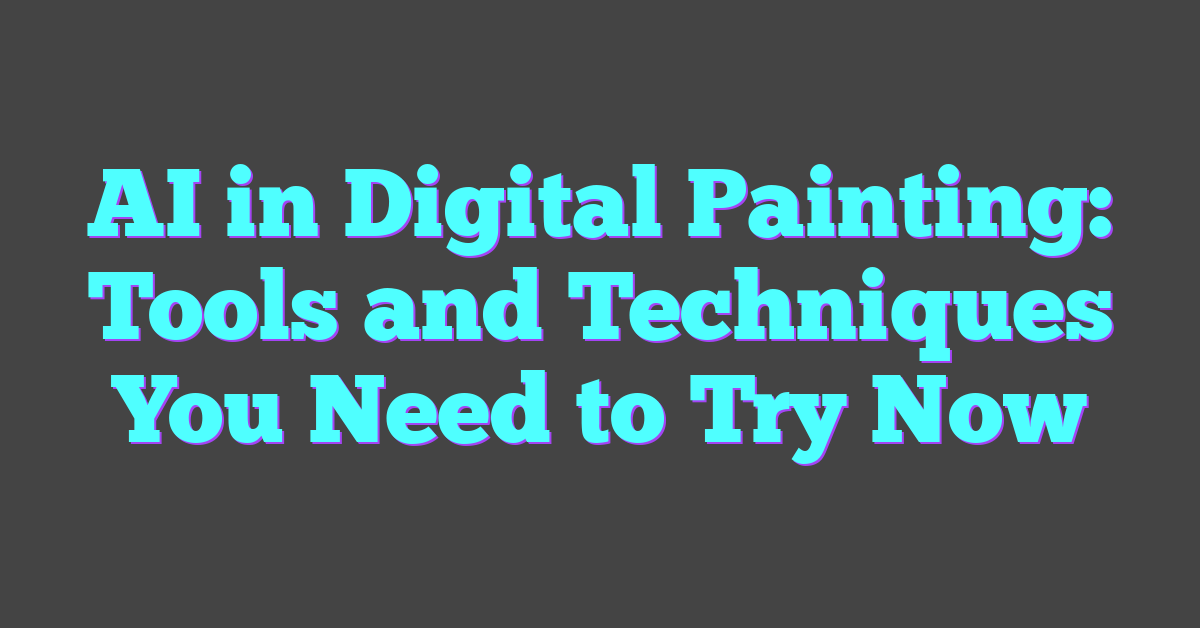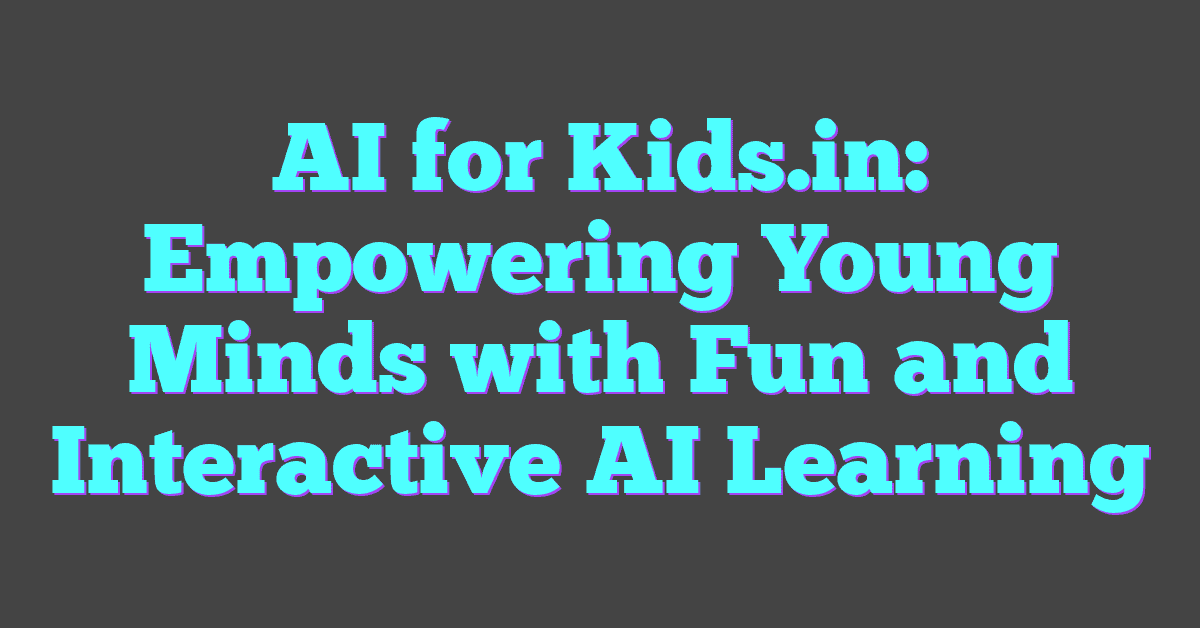Key Takeaways
- Revolutionizing Workflow: AI tools streamline digital painting processes, significantly reducing production time and enhancing overall efficiency.
- Advanced Software Integration: Platforms like Adobe Photoshop, Corel Painter, and Procreate incorporate AI features that offer versatile and realistic painting options.
- Innovative Techniques: AI-driven methods, including Generative Adversarial Networks (GANs) and style transfer, enable artists to create unique and detailed artworks effortlessly.
- Enhanced Creativity and Accessibility: AI suggests color palettes and composition ideas, making high-quality digital art creation accessible to both beginners and professionals.
- Addressing Challenges: Key considerations such as technical limitations, ethical concerns, and cost factors are essential for the effective integration of AI in digital painting.
- Future Trends: Advancements in AI promise more immersive tools, integration with AR/VR, and greater personalization, further expanding the creative possibilities for digital artists.
Artificial intelligence is revolutionizing the world of digital painting, offering artists innovative tools and techniques to elevate their craft. By integrating AI, creators can streamline their workflow, experiment with new styles, and achieve stunning results that were once unimaginable.
From smart brushes that adapt to an artist’s strokes to software that suggests color palettes, AI is expanding the boundaries of what’s possible in digital art. This fusion of technology and creativity not only enhances artistic expression but also makes the art-making process more accessible to everyone.
In this article, we’ll dive into the latest AI-driven tools and techniques transforming digital painting, showcasing how artists can harness these advancements to bring their visions to life.

Key Tools for AI-Powered Digital Painting
AI-powered tools transform digital painting by enhancing creativity and efficiency. These tools offer diverse features to support artists in various stages of their workflow.
AI-Based Software Platforms
- Adobe Photoshop: Integrates AI features like Neural Filters and Content-Aware Fill, enabling realistic image modifications and enhancements.
- Corel Painter: Utilizes AI-driven brushes that mimic traditional media, providing artists with versatile painting options.
- Procreate: Features machine learning tools for smooth brush strokes and intuitive layering, streamlining the digital painting process.
- Artbreeder: Combines genetic algorithms with user input to generate unique artwork variations, assisting in creative exploration.
Plugins and Extensions
- NVIDIA Canvas: A plugin that uses GANs to transform simple sketches into detailed landscapes, accelerating the concept art phase.
- Topaz Labs: Offers extensions for image upscaling and noise reduction, improving the quality of digital paintings without manual adjustments.
- Luminar AI: Integrates with various digital painting software to provide AI-based enhancements like automatic color grading and light adjustments.
- RunwayML: Provides a suite of AI tools as extensions, including style transfer and object recognition, enhancing creative possibilities within existing platforms.
Techniques Utilizing AI in Digital Painting
AI-driven techniques transform digital painting by enhancing creativity and efficiency. These methods leverage advanced algorithms to assist artists in various stages of their workflow.
Generative Adversarial Networks (GANs)
Generative Adversarial Networks create realistic artworks by learning from vast datasets. GANs generate new images, enabling artists to explore endless creative possibilities. They consist of two neural networks—the generator and the discriminator—that compete to produce authentic results. Tools like Artbreeder utilize GANs to allow artists to blend styles and generate unique compositions. Artists benefit from GANs by quickly prototyping ideas and achieving complex textures without manual effort.
Style Transfer Methods
Style transfer methods apply the visual style of one image to another, preserving content while altering aesthetics. These techniques enable artists to experiment with different artistic styles effortlessly. Algorithms analyze and separate content and style elements, then recombine them to create harmonious artwork. Applications like DeepArt and Prisma offer user-friendly interfaces for style transfer, allowing artists to mimic famous painters’ techniques. By using style transfer, artists can enhance their work with diverse textures, colors, and patterns, expanding their creative toolkit.
Benefits of AI in Digital Painting
- Increased Efficiency: Automates tasks like shading and coloring, reducing production time by up to 30%.
- Enhanced Creativity: Suggests color palettes and composition ideas, inspiring new techniques.
- Detailed Realism: Generates complex textures and patterns for photorealistic effects.
- Accessible Tools: Enables both beginners and professionals to create high-quality artwork.
- Personalized Assistance: Adapts to individual styles, offering tailored suggestions.
| Benefit | Impact |
|---|---|
| Increased Efficiency | Reduces production time by up to 30% |
| Enhanced Creativity | Inspires exploration of new techniques |
| Detailed Realism | Achieves photorealistic effects |
| Accessible Tools | Facilitates high-quality creation for all skill levels |
| Personalized Assistance | Provides tailored suggestions based on individual styles |
Challenges and Considerations
Integrating AI into digital painting introduces several challenges that artists and developers must address to maximize its potential.
Technical Limitations
AI algorithms, while advanced, can struggle with understanding nuanced artistic styles. They often require large datasets to perform effectively, which may not be available for niche art forms. Additionally, real-time processing demands significant computational resources, potentially limiting accessibility for some users.
Ethical Concerns
The use of AI in art raises questions about originality and authorship. When AI generates elements of a painting, determining the extent of the artist’s contribution becomes complex. Moreover, the reliance on existing artworks for training AI models can lead to issues related to copyright infringement and intellectual property rights.
Learning Curve
Artists accustomed to traditional digital tools may face a steep learning curve when adopting AI-driven software. Understanding how to effectively use AI features requires time and experimentation, which may deter some creatives from integrating these technologies into their workflow.
Cost Factors
Advanced AI tools and software often come with high costs, making them less accessible to emerging artists or those with limited budgets. Subscription fees, licensing costs, and the need for high-performance hardware can create financial barriers to entry.
Dependence on Technology
Overreliance on AI tools can potentially diminish an artist’s fundamental skills. If artists depend too heavily on automated features, they might find it challenging to develop and maintain essential techniques required for manual digital painting.
Data Privacy
AI tools typically require access to user data to function effectively. Ensuring the privacy and security of this data is crucial, as breaches can lead to unauthorized use of an artist’s work or personal information.
Quality Control
While AI can enhance efficiency, it may also produce inconsistent results. Ensuring that AI-generated elements align with the artist’s vision requires careful oversight and manual adjustments, which can negate some of the benefits offered by automation.
| Challenge | Description |
|---|---|
| Technical Limitations | Requires large datasets; high computational resources needed for real-time processing |
| Ethical Concerns | Questions about originality, authorship, and copyright infringement |
| Learning Curve | Time and effort needed to master AI-driven tools |
| Cost Factors | High costs of software, subscriptions, and necessary hardware |
| Dependence on Technology | Risk of diminishing fundamental artistic skills |
| Data Privacy | Ensuring the security and privacy of user data |
| Quality Control | Maintaining consistency and alignment with the artist’s vision |
Addressing these challenges involves continuous advancements in AI technology, clear ethical guidelines, and providing education and support for artists to integrate AI tools effectively into their creative processes.
Future Trends in AI for Digital Painting
Advancements in artificial intelligence promise to further revolutionize digital painting. Enhanced Generative Adversarial Networks (GANs) will enable artists to create even more realistic and intricate textures, pushing the boundaries of visual realism. Real-time style transfer technology is set to improve, allowing seamless application of diverse artistic styles during the creative process.
AI-driven personalization tools will offer tailored suggestions based on an artist’s unique style, increasing efficiency and fostering creativity. These tools will analyze individual techniques and preferences, providing customized color palettes and composition ideas that align with the artist’s vision.
Integration with augmented reality (AR) and virtual reality (VR) will transform the digital painting experience. Artists can expect immersive environments where AI assists in three-dimensional artwork creation, enhancing spatial awareness and depth in their pieces.
Collaborative platforms powered by AI will facilitate real-time teamwork among artists globally. These platforms will use machine learning to synchronize efforts, manage project workflows, and ensure consistency across collaborative projects.
Improved user interfaces for AI tools will make advanced features more accessible to artists of all skill levels. Simplified controls and intuitive designs will lower the learning curve, enabling more artists to harness the power of AI without extensive technical knowledge.
AI in animation will gain prominence, allowing digital painters to create dynamic and interactive artworks. Machine learning algorithms will automate frame generation and motion effects, reducing the time required for animation and increasing creative possibilities.
Accessibility to affordable AI-powered digital painting tools will expand, democratizing high-quality art creation. Cloud-based solutions and subscription models will lower costs, making advanced AI tools available to emerging artists and hobbyists.
Ethical AI development will focus on originality and authorship, ensuring that AI-generated elements complement rather than overshadow the artist’s creativity. Clear guidelines and transparent algorithms will support ethical integration of AI in digital painting.
These future trends underscore the ongoing synergy between artificial intelligence and digital painting, promising to enhance artistic expression and expand the creative landscape.
Conclusion
AI is reshaping the world of digital painting, opening up new avenues for creativity and efficiency. Artists can now explore innovative techniques and tools that were once out of reach, making the art-making process more accessible and enjoyable.
As AI continues to evolve, it promises even greater enhancements, from more realistic textures to seamless style integrations. The collaboration between human creativity and machine intelligence is creating a dynamic and inspiring environment for artists of all levels.
Embracing these advancements allows artists to push their boundaries and bring their unique visions to life. With ongoing developments, the future of digital painting looks brighter and more exciting than ever, offering endless possibilities for artistic expression.




